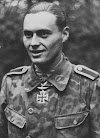Hiroo Onoda was a Japanese Intelligence Officer in the Imperial
Japanese Army who refused to surrender until decades after World War 2 ended. In
the Pacific theater there were many remaining Japanese hold outs called Zanryu
Nipponhei or Remaining Japanese soldiers, they were motivated to continue on
the war until the Japanese had surrendered in August 1945, because of their
dogmatic, militaristic indoctrination or simply because they were unaware of
the surrender.
Hiroo Onoda was trained at the Nakano School as an Intelligence
Officer, he was taught Guerilla warfare and Intelligence-Gathering. He was sent
to Lubang Island in the Philippines in late 1944, where he soon meets up with a
group of other Japanese Soldiers that are already in the Philippines. Major
Yoshimi Taniguchi had given him orders to live off the Island and forbade him
to die by his own hand. He would further reassure Officer Onoda by saying” It
may take three years, It may take five. But whatever happens, we’ll come back for you, as long as you have one soldier, you are to continue to lead them.
But higher-ranked officers of the group made him unable to
carry out his mission to sabotage the enemy airstrip and Pier at the Harbor; this
in turn made the U.S conquest island, which is achieved in February 1945 easy. Once
the allied forces were on the island, the large group simply split into smaller
groups and consists of 3-4 and escaped into the Jungle but was soon either
picked up the US soldiers or surrendered until it was Hiroo Onoda and three
others under his command were left active: Private Yuichi Akatsu, Corporal
Shoichi Shimada, and Private first class Kinshichi Kozuka, all of which had set
up a base in the mountains.
After Japan had formally and officially surrendered on
September 1945, Onoda and his group came across a number of leaflets, the first
leaflets left behind by locals was quietly discovered soon reading ”The war
ended on August 15. Come down from the mountains”. But they considered it an
Allied Propaganda Trick, and after the conclusion the group continued to raid
local islanders for food and other resources.
General Tomoyuki Yamashita of the 14th area also dropped
some leaflets with a surrender order but again was considered a trick. With the
lack of knowledge of the atomic bombs dropped on Hiroshima and Nagasaki, It may
have seen unlikely that Japan is willing to surrender. In 1949, Yuichi Akatsu
escaped from the group and surrendered to the Filipino forces in 1950 causing
the remaining three soldiers to be cautious to disloyalty. In 1952, the search
was expanded with letters and pictures with the Group families dropped from an
aircraft, but again they consider off as written tricking them.
Every piece of evidence to the group came across increased their
paranoia and hostilities. While they were dressed in Japanese army uniforms,
they came across in civilian clothing which they interpreted as Allied soldiers
in disguise with the strategy of luring them out. As a result, they didn’t
think twice when firing on the locals. Corporal Shoichi Shimada was shot in the
leg and was recovered with the help of Onoda in 1953, but on May 17th
1954, he was killed by a search party when he fired upon his potential rescuers
who returned fire.
And there’s just Onoda and Kozuka is left, they would continue
the mission to sabotage, gathering intelligence on, and attack the enemy which
no longer exists. But on October 19th, 1972 during a skirmish, Kozuka
was shot and killed by police when his burning a local rice collection and
Onoda was alone until 1974. On February 20th, 1974, a determined
Japanese explorer named Norio Suzuki found Hiroo Onoda. Onoda still refused to
surrender, however, Suzuki had the idea to locate Onoda’s original officer Major
Yoshimi Taniguchi. In March 1974 his former commanding officer Major Yoshimi
Taniguchi traveled to the Philippines to fulfill his promise to return, and end his
orders in person.
Hiroo Onoda still wearing his tattered and original Japanese
army uniform from decades ago saluted the Japanese flag and he handed over his
Samurai sword, his fully-functioning Arisaka Type 99 rifle, several rounds,
hand grenades, and his family dagger. The Philippine Government, under President
Marco’s, granted him a pardon, taking into consideration that although he
killed 30 innocent people during his campaign on the island, he thought that
the war is still going on. When he returned to Japan Onoda was very popular,
but he found it hard to adjust to the new-post war Japan and the decay of its
traditional values. He published an autobiography and in 1979 left Japan for
Brazil. On his last day, he said in an interview saying “Every Japanese soldier
was prepared for death. But as an Intelligence officer, I was ordered to
conduct Guerilla warfare and not to die. I became an officer and I received an
order, if I could not carry it out, I would feel shame. I am very competitive.”
Hiroo Onoda died on January 16, 2014.









0 Comments